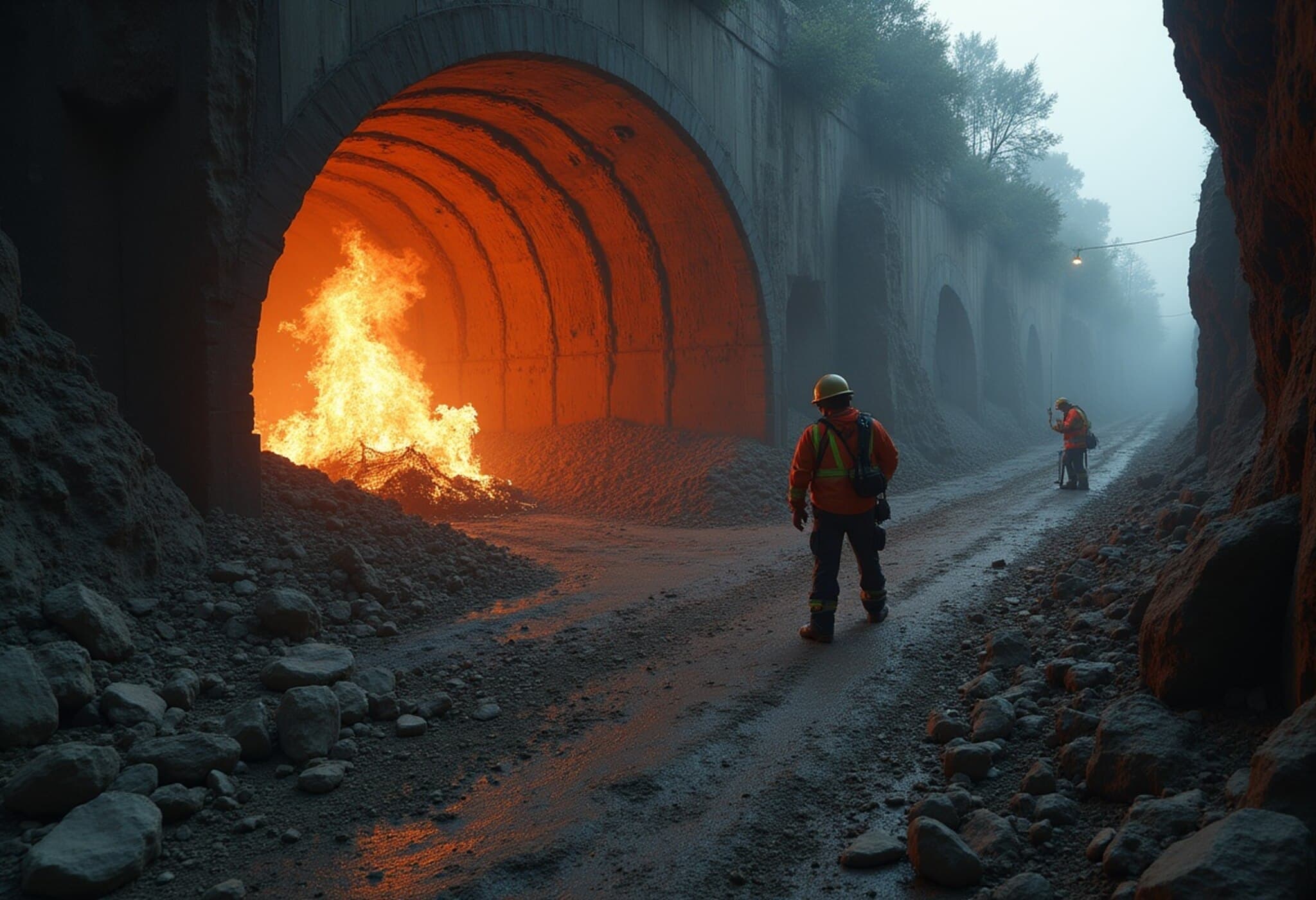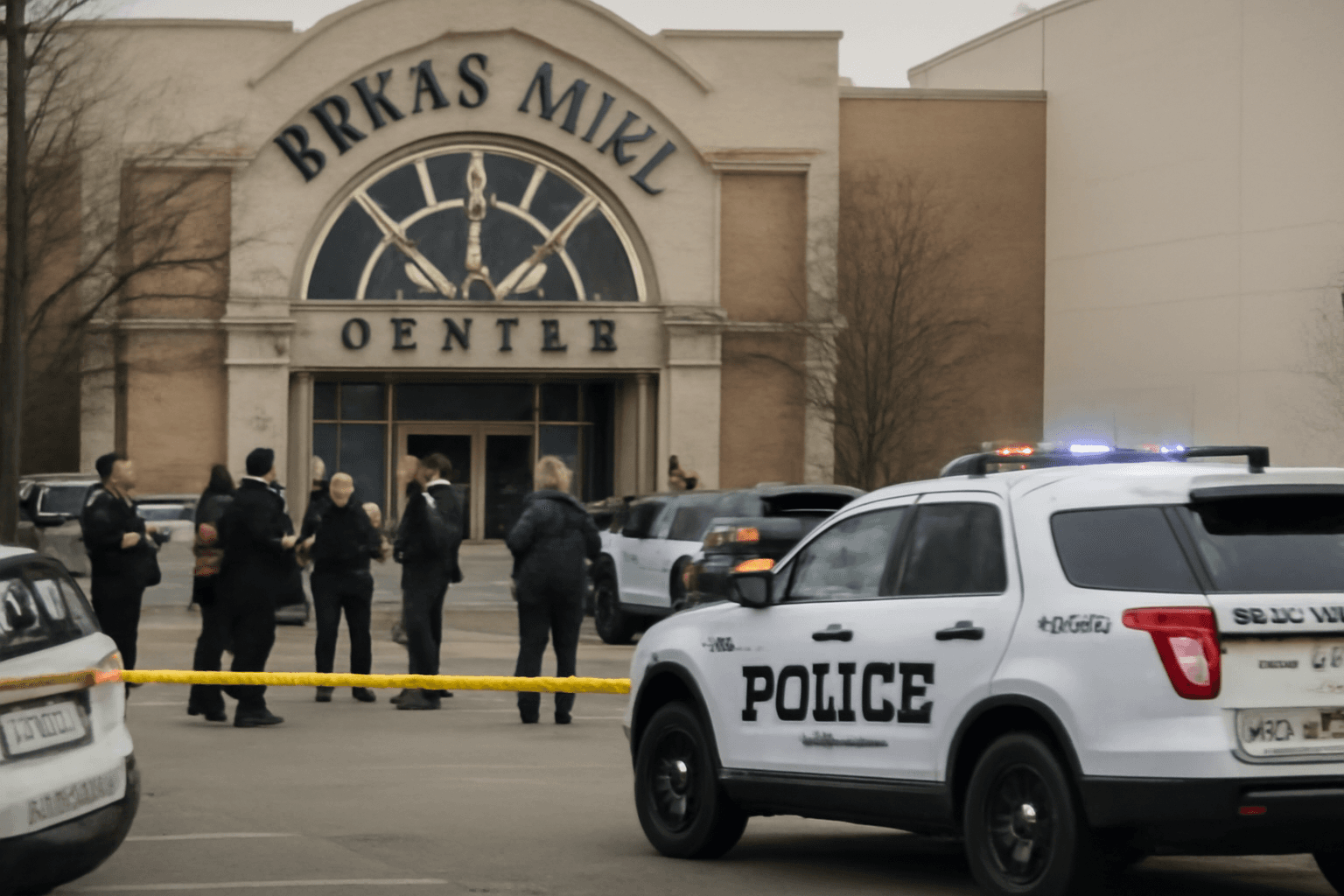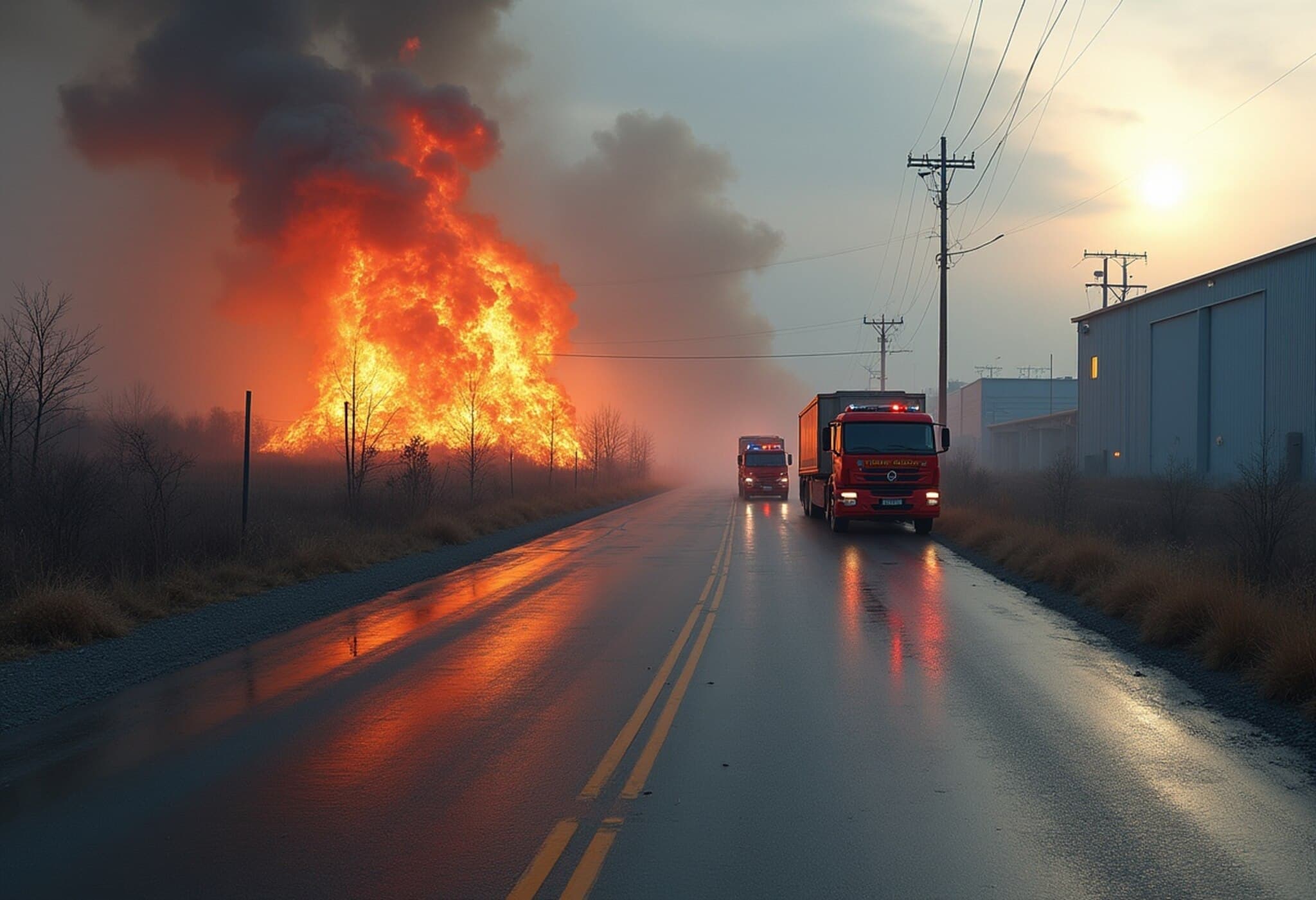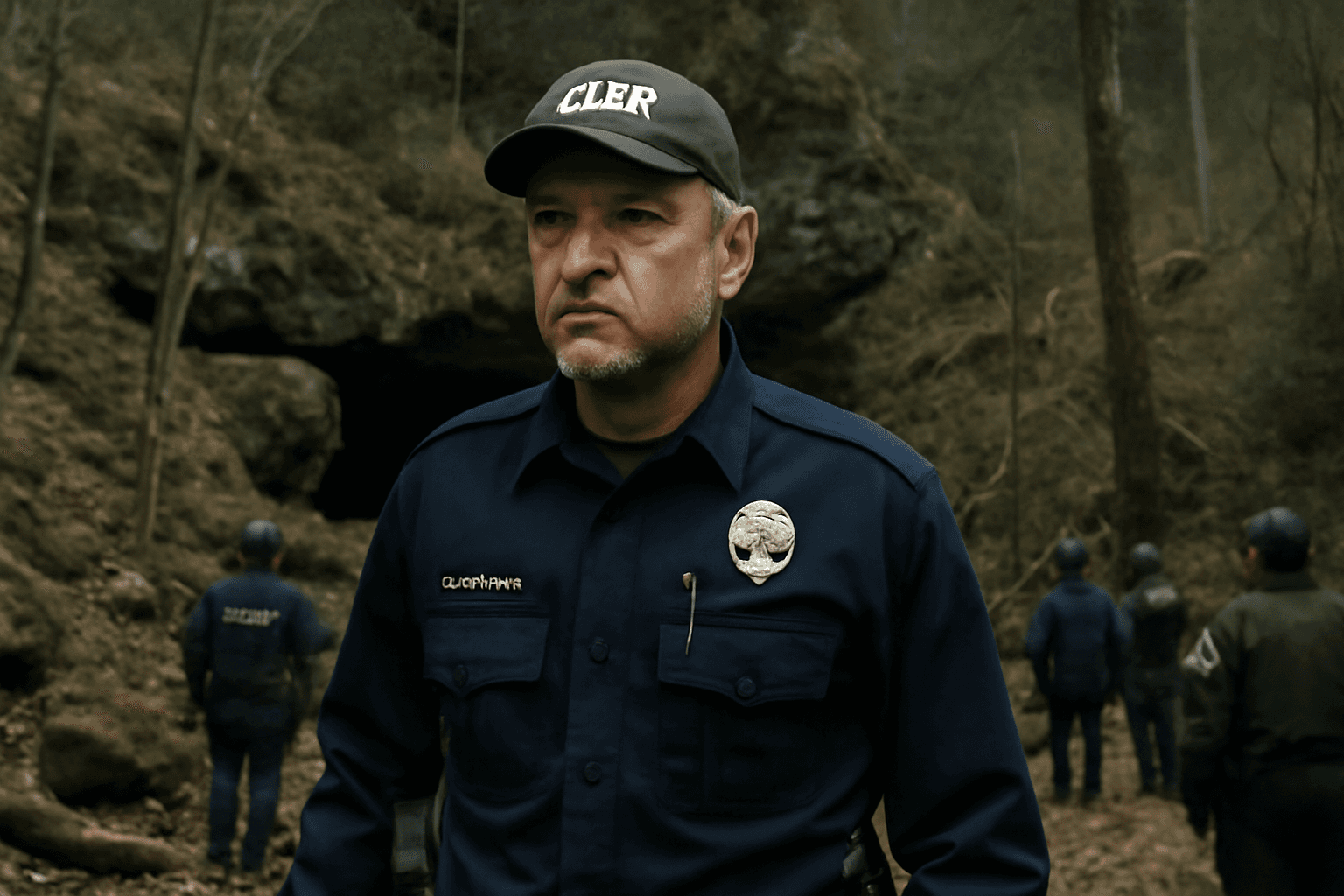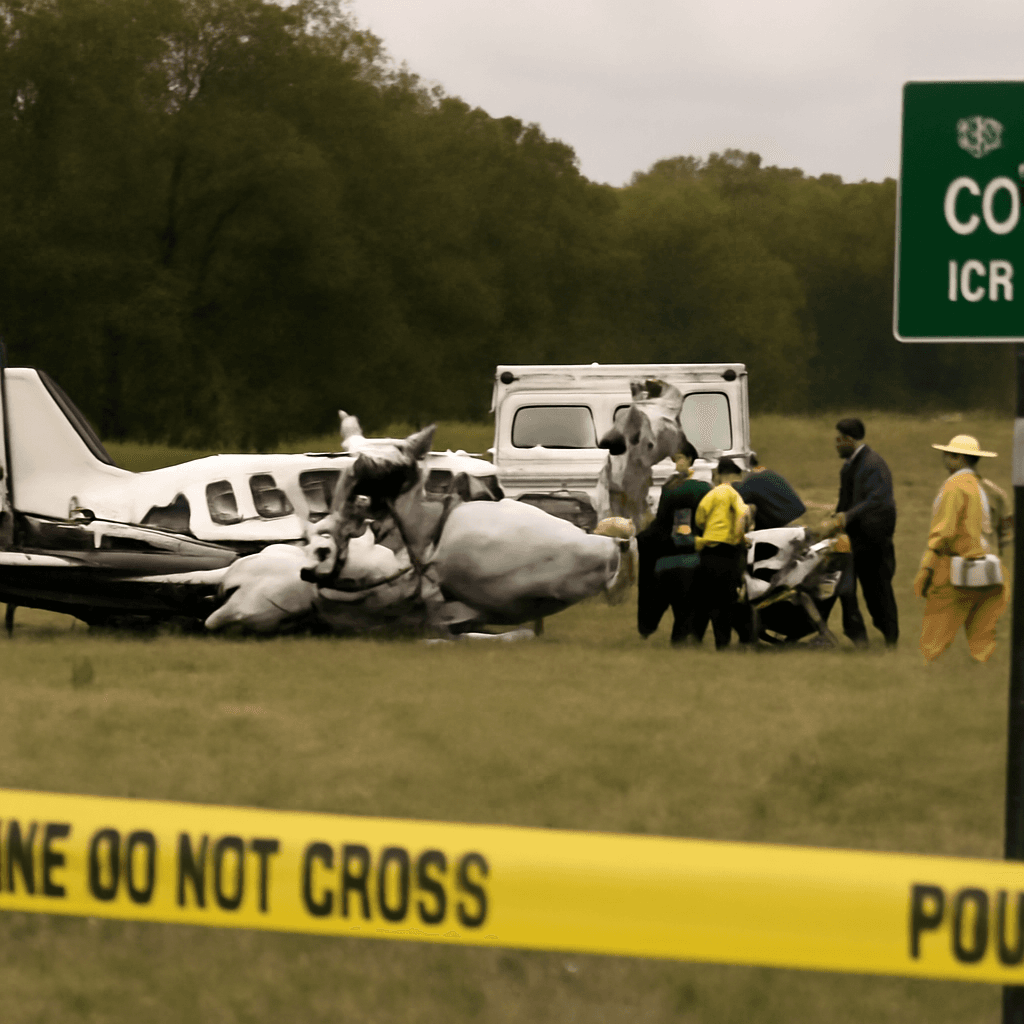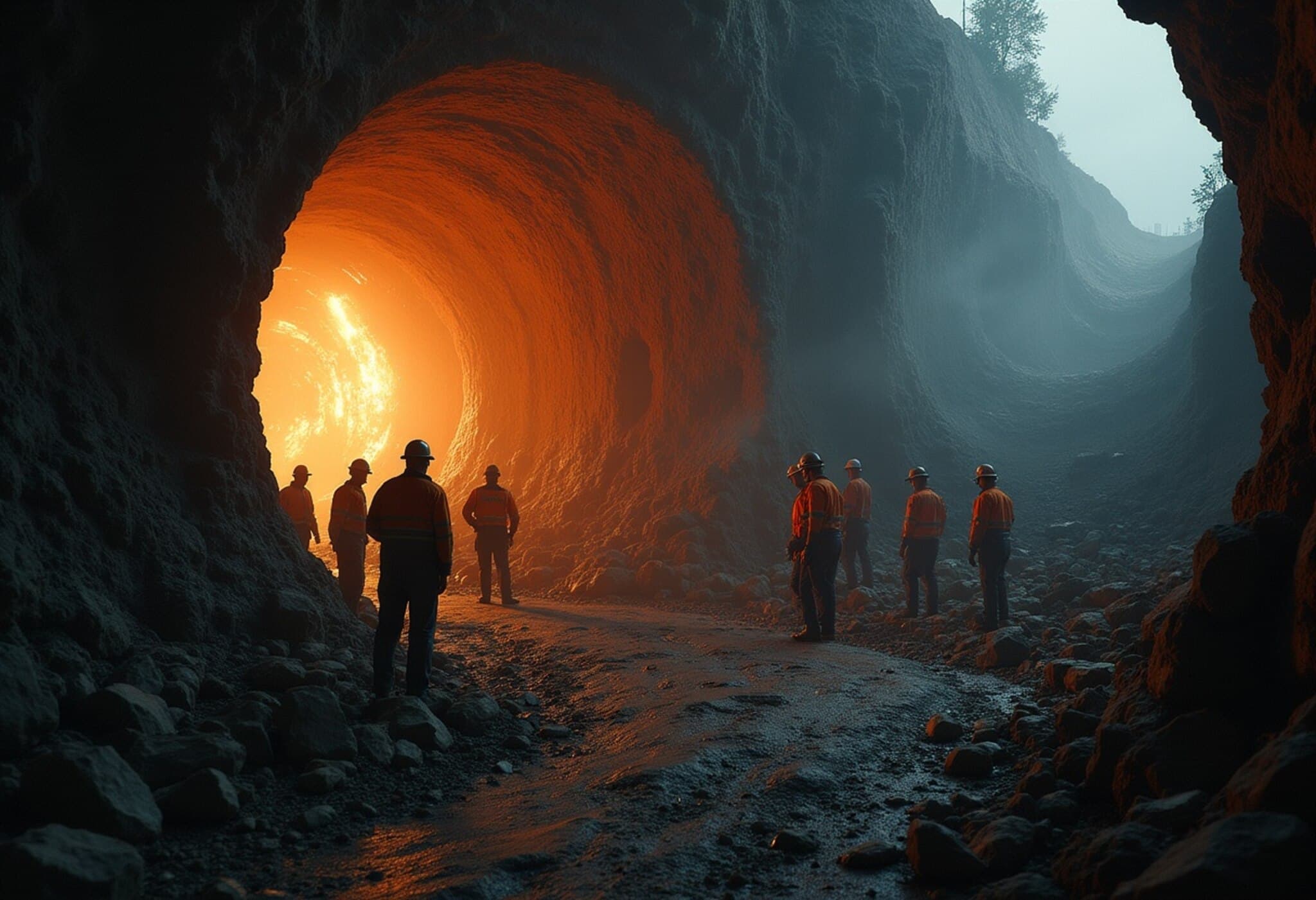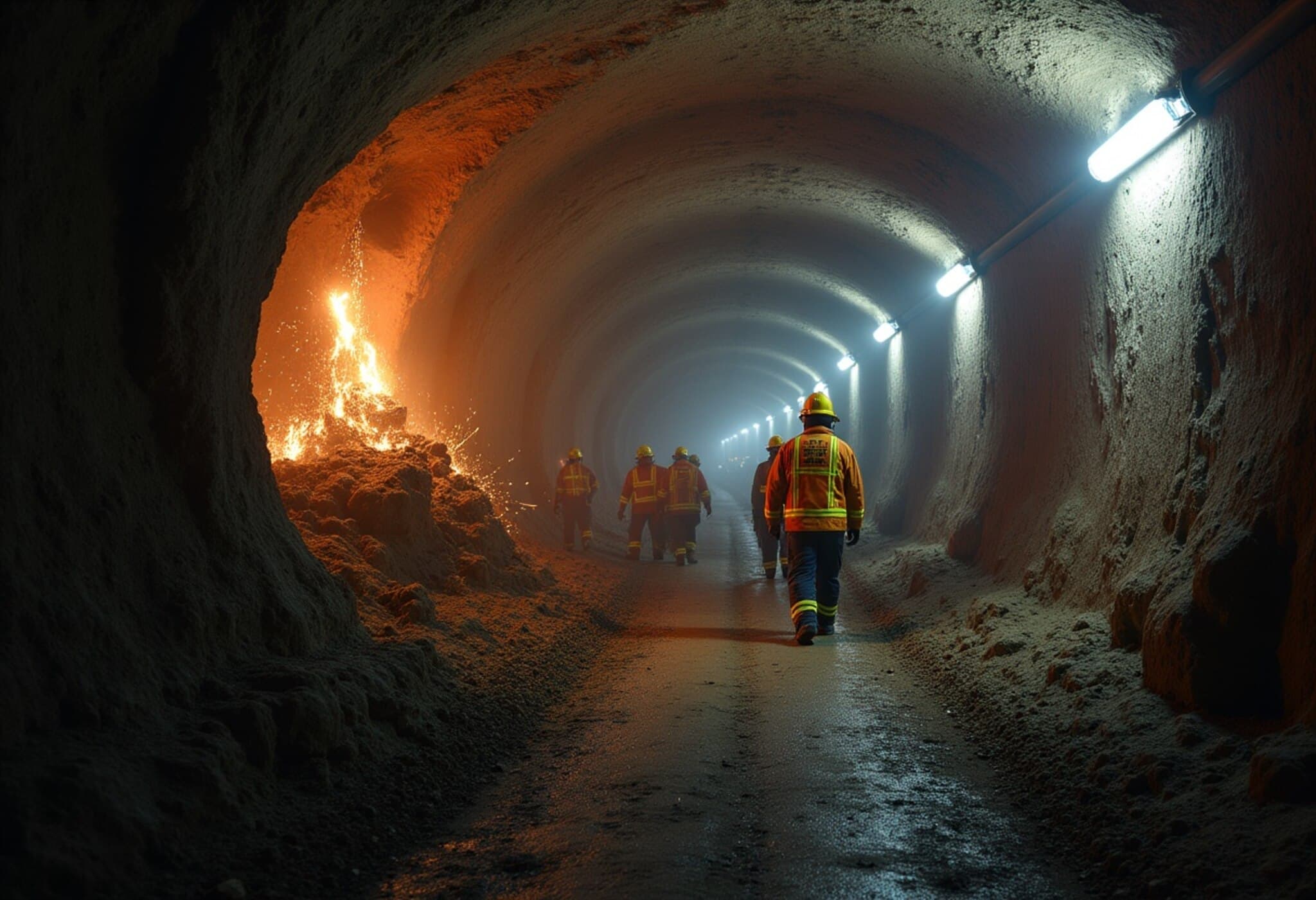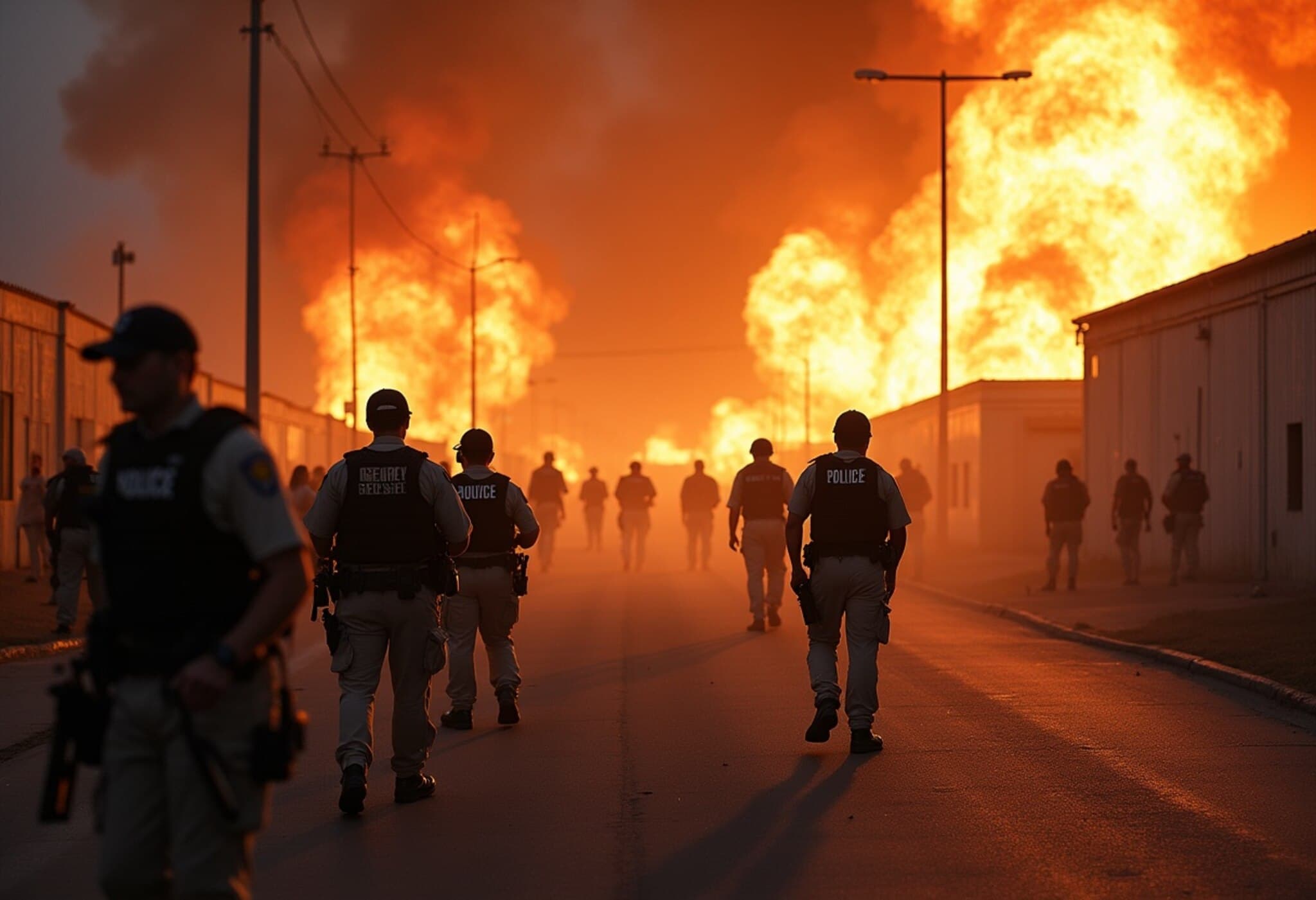Tragic Tunnel Collapse in Wilmington, Los Angeles
On Wednesday, July 10, 2025, a catastrophic tunnel collapse occurred in the Wilmington district of Los Angeles, near the intersection of W. Lomita Boulevard and S. Figueroa Street. According to the Los Angeles Fire Department (LAFD), up to 28 workers are feared trapped underground as rescue teams scramble to reach them amid challenging conditions.
Initial Rescue Efforts and Response
Originally, emergency officials reported that 15 workers were trapped; however, subsequent updates from CBS Los Angeles indicate the number may be higher, possibly as many as 28 individuals. Thankfully, as of now, there have been no confirmed reports of injuries, though the situation remains extremely precarious.
The LAFD conveyed in an official statement that the collapsed tunnel is located several miles south of the reported access point, complicating efforts to gain swift entry. The exact depth and diameter of the tunnel remain undetermined, posing additional challenges for rescue personnel.
Emergency Teams Mobilized on Scene
A massive operation is underway with approximately 100 firefighters dedicated to the rescue effort, including members of the LAFD’s specialized Urban Search and Rescue (USAR) team. These experts are trained to navigate confined, unstable underground environments and are utilizing advanced equipment tailored to tunnel emergencies.
Given the complexity of tunnel collapses—the risks of further cave-ins, limited air supply, and possible flooding—rescuers face a race against time. Prompt, coordinated action is crucial to improving the chances of saving every trapped worker.
Broader Implications and Industry Concerns
This incident underlines ongoing concerns about occupational safety in underground construction projects across urban centers in the United States. Tunnels serve critical infrastructure roles, yet the work environment is inherently risky, especially in older or heavily industrialized areas.
Experts emphasize the need for robust safety protocols, continuous structural monitoring, and stringent regulatory oversight. The LAFD’s swift deployment of specialized teams showcases emergency preparedness, but preventing such disasters is equally essential.
Community and Policy Perspectives
The Wilmington neighborhood now faces heightened anxiety and humanitarian challenges as families seek information while rescue teams work tirelessly. This tragedy calls attention to broader questions about labor protections, contractors’ accountability, and investments in worker safety technologies.
In California—home to expansive and aging infrastructure—such incidents prompt policy debates around funding for modernization and enhanced safety standards in construction industries prone to subsurface hazards.
Looking Ahead
As anxious hours unfold, the focus remains firmly fixed on safely retrieving those trapped. The LAFD and city officials promise to provide continuous updates as rescue operations progress.
Editor’s Note
This unfolding tunnel collapse tragedy highlights the urgent need to revisit industrial safety measures where subterranean construction intersects with dense urban life. While rescue teams demonstrate remarkable expertise and courage, the incident spotlights underreported risks workers face daily. It also opens a crucial dialogue on how American cities can balance growth with human safety—challenging policymakers and industry leaders to prioritize lives alongside infrastructure expansion.
Readers are encouraged to follow official channels for verified updates and consider the broader implications for labor rights, urban planning, and public safety.

